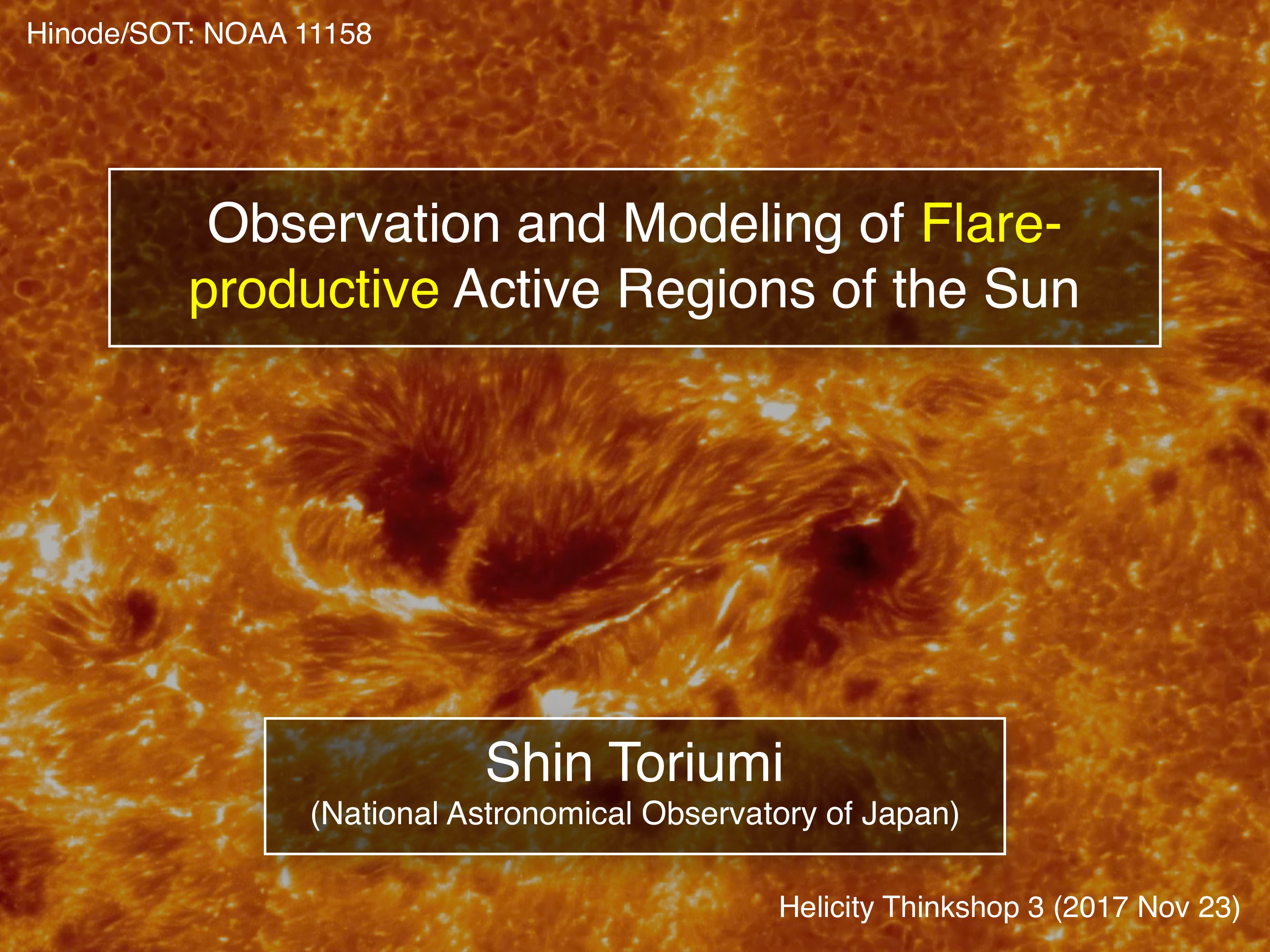Affiliation
National Astronomical Observatory of Japan
Main category
Natural Sciences (Astrophysics and Astrononmy)
Abstract
Solar flares and coronal mass ejections (CMEs) are the catastrophic releasing of magnetic energy and helicity. It is known that strong eruptions take place in complex active regions (ARs). We surveyed all ARs that produced >M5.0-class events for 6 years from May 2010 to April 2016. Morphologically, these ARs can be classified into four categories, namely, (1) Spot-Spot, a complex AR with an extended magnetic neutral line, (2) Spot-Satellite, in which a newly-emerging field appears next to the pre-existing sunspot, (3) Quadrupole, where two emerging fields collide against each other, and (4) Inter-AR, the flares occurring between two separated ARs. We found, for example, that the flare durations are longer for the Spot-Spot events than the Spot-Satellite ones. We then reproduced these four AR groups by conducting a series of 3D MHD flux emergence simulations and found that the sheared magnetic structures in these ARs are created through the stretching and advection of horizontal magnetic fields due to relative spot motions. As ARs develop, free magnetic energy becomes stored in the higher atmosphere, which could be eventually released through flare eruptions.
Do you have problems viewing the pdf-file? Download presentation
here
If the presentation contains inappropriate content, please
report the presentation. You will be redirected to the landing page.
